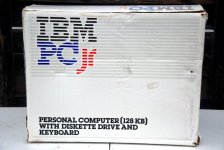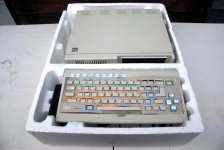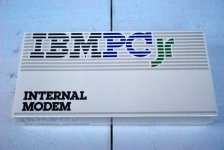Eudimorphodon
Veteran Member
I have vague memories of there being enough leftover stock of the Convertible when it was discontinued that the usual liquidator suspects were selling them off dirt cheap for a while, but I don't think it was quite the same level of flop as the PCjr. What's sort of fascinating about it is how many of the Jr's bad ideas carry over to it, though, like the stacked expansion "slices", despite being released over a year after the Junior was canned. (It even uses PCjr-style Berg connectors on its CGA adapter instead of CGA dsub connectors.) The machine kind of reeks of having actually been designed in 1984 but for whatever reason being delayed until well after more "conventional" machines like the Toshiba T1100 came out in 1985 and ate its lunch.
IBM really had issues with laptop/portable designs before they finally nailed it with the Thinkpad.(*) Their next machine after the Convertible, the PS/2 Model L40 SX, was also "weird", a little late to market, and generally perceived as overpriced.
(* What's odd is around the same time they were unleashing the L40 on the US market they started selling the PS/55note in Japan, which was a much more modern-looking system. A year later the L40 was replaced in the US with machines descended from this line clearly leading to the Thinkpad.)
IBM really had issues with laptop/portable designs before they finally nailed it with the Thinkpad.(*) Their next machine after the Convertible, the PS/2 Model L40 SX, was also "weird", a little late to market, and generally perceived as overpriced.
(* What's odd is around the same time they were unleashing the L40 on the US market they started selling the PS/55note in Japan, which was a much more modern-looking system. A year later the L40 was replaced in the US with machines descended from this line clearly leading to the Thinkpad.)



